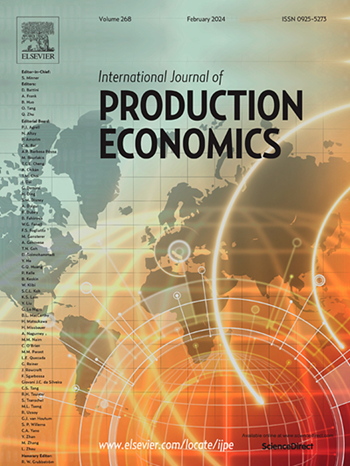Optimal security and pricing strategies for AI cloud service providers: Balancing effort and price discounts across public, private, and hybrid AI cloud models
IF 9.8
1区 工程技术
Q1 ENGINEERING, INDUSTRIAL
引用次数: 0
Abstract
In this study, we focus on cloud security and pricing as key factors that influence end users' choices. We develop an analytical model to examine how an artificial intelligence (AI) cloud service provider optimally sets security investments and price discounts, considering users' different views of public, private, and hybrid AI cloud services. Our results show how end users' characteristics and market dynamics affect these strategies and reveal the balance providers must strike between improving user experiences, capturing market share, and maximizing profits. We find that the provider's control over AI cloud security—along with security costs for both the provider and users, as well as users' potential security losses—plays a critical role in shaping effective strategies. In low-security-loss environments, end users gain more from choosing public AI cloud solutions. However, private AI cloud solutions become more favorable if the provider's security cost coefficient falls within certain limits. In the hybrid AI cloud scenario, the model becomes more complex. Under some conditions, security investment and price discounts act as complementary strategies; in others, they substitute for one another. We also analyze how these choices affect market share and profitability, and find that in some cases, security investments can outperform price discounts.
人工智能云服务提供商的最佳安全性和定价策略:平衡公共、私有和混合人工智能云模型的工作量和价格折扣
在本研究中,我们将重点关注云安全性和价格作为影响最终用户选择的关键因素。我们开发了一个分析模型来研究人工智能(AI)云服务提供商如何在考虑用户对公共、私有和混合AI云服务的不同看法的情况下,最佳地设置安全投资和价格折扣。我们的研究结果显示了终端用户特征和市场动态如何影响这些策略,并揭示了供应商必须在改善用户体验、获取市场份额和最大化利润之间取得平衡。我们发现,提供商对人工智能云安全的控制——以及提供商和用户的安全成本,以及用户潜在的安全损失——在制定有效策略方面起着关键作用。在低安全损失的环境中,最终用户通过选择公共AI云解决方案获得更多收益。然而,如果提供商的安全成本系数在一定范围内,私有AI云解决方案将更有利。在混合人工智能云场景中,模型变得更加复杂。在一定条件下,证券投资与价格折扣互为补充策略;在其他情况下,它们相互替代。我们还分析了这些选择如何影响市场份额和盈利能力,并发现在某些情况下,证券投资可以优于价格折扣。
本文章由计算机程序翻译,如有差异,请以英文原文为准。
求助全文
约1分钟内获得全文
求助全文
来源期刊
CiteScore
21.40
自引率
7.50%
发文量
266
审稿时长
52 days
期刊介绍:
The International Journal of Production Economics focuses on the interface between engineering and management. It covers all aspects of manufacturing and process industries, as well as production in general. The journal is interdisciplinary, considering activities throughout the product life cycle and material flow cycle. It aims to disseminate knowledge for improving industrial practice and strengthening the theoretical base for decision making. The journal serves as a forum for exchanging ideas and presenting new developments in theory and application, combining academic standards with practical value for industrial applications.

 求助内容:
求助内容: 应助结果提醒方式:
应助结果提醒方式:


